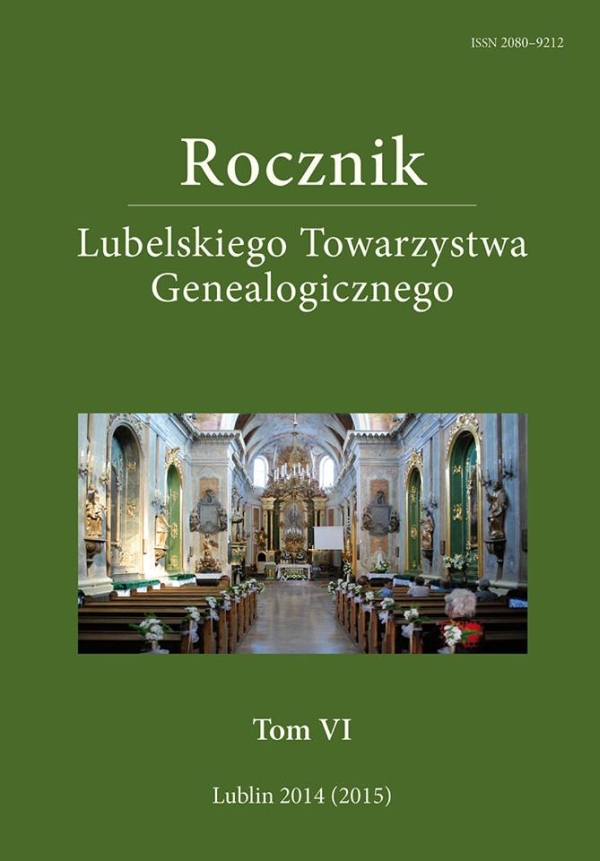Specyfikacja kamienic i moderacja pogłównego Lublina z 1738 r.
The specification of tenements and revitalization of the Major Lublin in 1738
Author(s): Michał WójciukSubject(s): History, Modern Age, 18th Century
Published by: Lubelskie Towarzystwo Genealogiczne
Keywords: Lublin; XVIII c.; Poland
Summary/Abstract: The article is an edition of specifications of tenements in Lublin (the city inside walls and Krakowskie Przedmieście) complied by the city office in 1738 for tax reasons. The materials presented encompass: the specification of tenements on 3 November 1738, as well as a revitalization of the Old Town on 29 April 1738 and 18 August 1738, and the revitalization of Krakowskie Przedmieście on 20 August 1738. All censuses are kept in a book number 295, which can be found in the State Archive of Lublin. The material presented is the entire list of tenements and other city properties built in Poland in the Saxon period and preserved until today. It is an interesting source of knowledge, crucial for getting to know the Old Polish Lublin, the topography of the city, as well as its social specification. Registries list the owners of particular real estates as well as their residents, show the localization of tenement houses belonging to the clergy (both diocesan and monastic), magnates, nobility, and middle class (patriciate and common people), and the localization of other buildings such as: schools, hospitals, inns, taverns, and business places. This source could be also used in onomastic studies, whether of an anthroponymic or toponymic character, as well as in genealogical studies. The material could be also useful for sociotopographical reconstructions. They are a repository of names and nicknames of the Lublin members of the middle class or real estate owners, the names of streets and squares. Among the owners and residents of tenements one could find very important names (members of the magnates holding the post of a dignitary or senator), representatives of the middle nobility, some influential people in Lublin working in the civil councils, as well as craftsmen, traders, and peddlers. It is also a source of information about the ethnic minorities living in the Lublin of that time, e.g. of a Jewish, German, Armenian, Italian, or French origin.
Journal: Rocznik Lubelskiego Towarzystwa Genealogicznego
- Issue Year: 2014
- Issue No: 6
- Page Range: 170 - 278
- Page Count: 109
- Language: Polish

